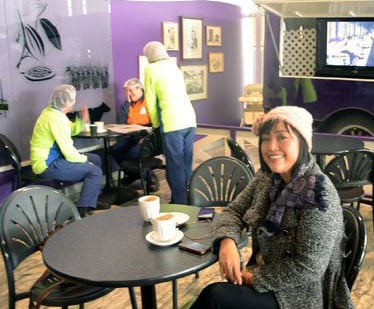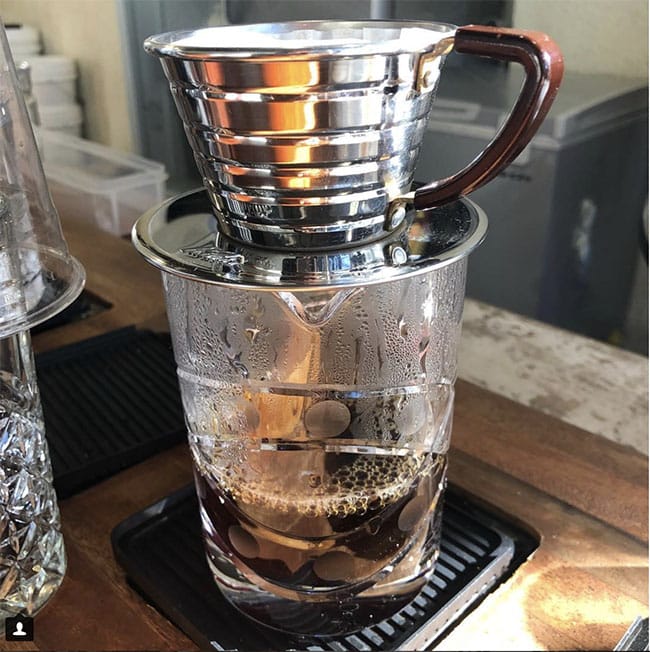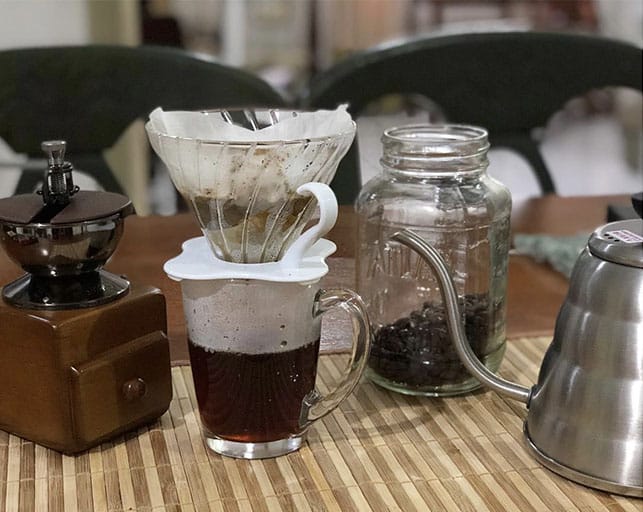My love of coffee must have started when the aroma of Nescafe instant coffee filled the air , as soon as my parents mixed their coffee with hot water , sugar and milk. “Can I have coffee, please?” Mom put down her coffee cup , and started to lecture me on the ill-effects of coffee.
“You will not grow tall if you drink coffee too early in life.” It was a “no”. I was 10 years old and this was the sixties.

I can’t recall the first time I tasted instant coffee but I knew I drank a lot when I studied late at night in the seventies. Yes, this was the “first wave” , the commercialization of coffee and when instant coffee tasted so good back then.
After college, my dad bought me an automatic drip coffee maker which required a paper filter. I felt so techie. I still remember the Hill Bros. Coffee can which was terribly expensive in the early 80s. Anything imported was expensive in those days when the exchange rate of the peso to dollar skyrocketed 200%.
Then Starbucks arrived in the Philippines in the nineties. The second wave or the emergence of coffee shops was something so new, a place to chill and meet friends. Everyone wanted to drink their expensive coffee.
 I thought Starbucks coffee tasted great until I visited my daughter in Melbourne. The city is home to a vibrant cafe scene and an impressive coffee culture. This was my first introduction to good coffee and me, saying goodbye to Starbucks (if I could help it). I chose to patronize coffee shops that include Philippine coffee such as Figaro, Bo’s Coffee , and Commune.
I thought Starbucks coffee tasted great until I visited my daughter in Melbourne. The city is home to a vibrant cafe scene and an impressive coffee culture. This was my first introduction to good coffee and me, saying goodbye to Starbucks (if I could help it). I chose to patronize coffee shops that include Philippine coffee such as Figaro, Bo’s Coffee , and Commune.
I thought I was such a great coffee lover until my two daughters commented “don’t add sugar or cream to your coffee. You are not appreciating the taste of good coffee.”
I just couldn’t stand the bitter taste . In my mind, coffee is meant to be mixed with sugar and cream. No wonder, I am diabetic.
My mindset on coffee brew totally changed on February 20, 2018.

I was in Cebu when my daughter sent me a message on WhatsApp. She said, “Visit Linear Coffee Roasters The highest rated roaster in Cebu according to google.”
The coffee lover that I am was excited to try it out. I asked for Philippine coffee. They had none. I was disappointed (it was a few weeks later, I finally understood that supply of Philippine coffee beans are limited). The barista offered me a choice of Ethiopia and Kenya coffee beans. I chose Ethiopia Yirgacheffe and watched in amazement as hot water hit the coffee grounds . The barista explained that one should let the gas (carbon dioxide) escape for about 30 seconds or so. How amazing it was to see grounds swell and expand, resulting in what coffee professionals call a “bloom.” This was the pour-over method.

Oh my god , an epiphany. I am never going to drink coffee with sugar and milk . The combination of 12 grams coffee beans plus 180 ml water at 93 C was perfect. I could not believe how incredible the taste of this coffee brew was. I could discern the flavor notes and I was totally amazed that coffee could taste like this.
So this is the “third wave” I have been hearing about , which refers to the higher culinary appreciation of coffee and all that this entails: a focus on subtleties of flavor, provenance and process. No wonder, my daughters were nagging me to taste the coffee without the sugar and milk. Though “third wave” is a US-centric term, the main ideas behind the concept , which describes a changing approach to coffee, can be applied to cultures around the world.
It definitely changed my view on coffee . I went on a crazy shopping spree at “Alessi” store for my coffee props because I wanted to brew my coffee using the pour-over method. I bought a Hario V60 coffee dripper, Hario manual grinder, Hario’s V60 Buono Coffee Drip Kettle and Hario filter paper . Alessi didn’t have the Kalita Wave that Linear Roasters used.
My home barista story is for another day.

This coffee journey is more exciting than ever, as I explore single origins from the Philippines and around the world. I am excited to discover coffee from the farm to the cup.
